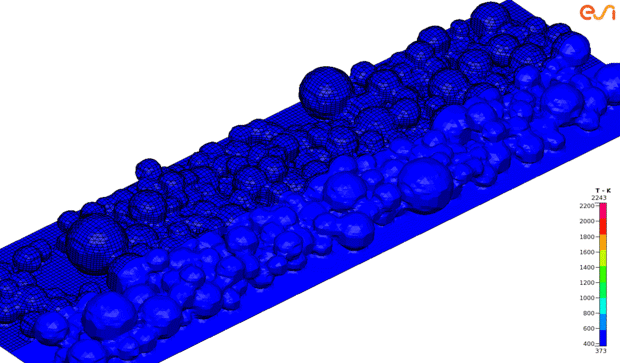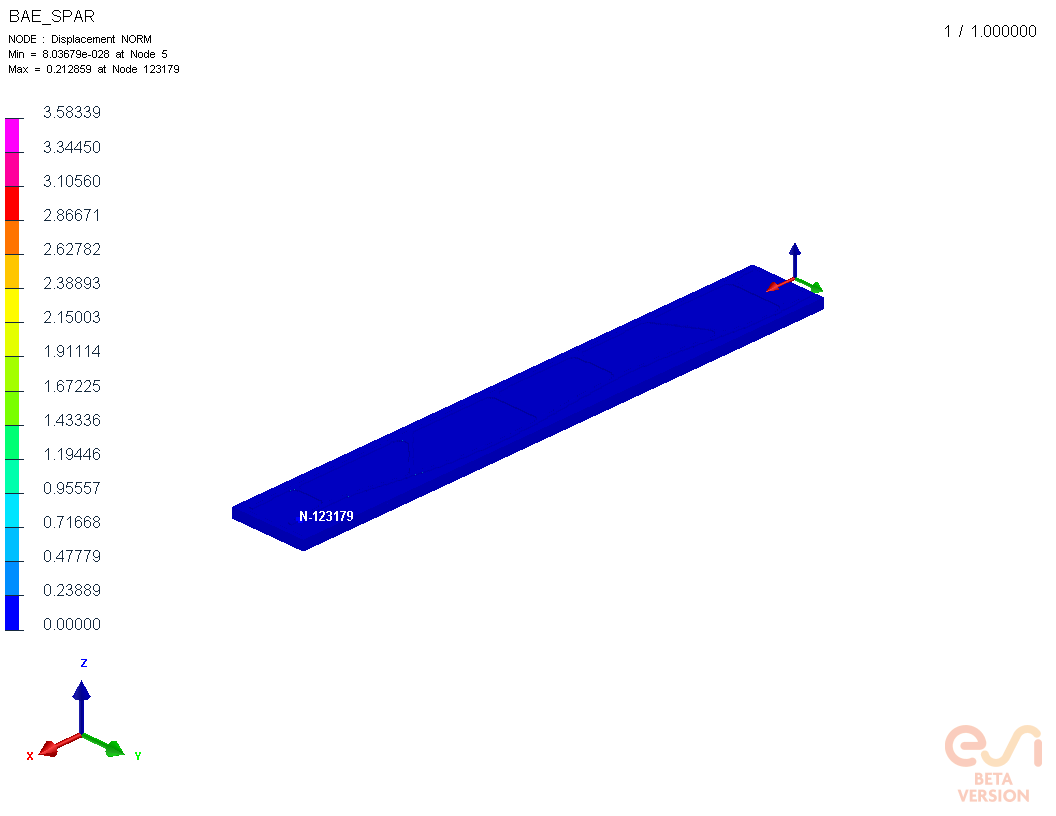Solutions for Metal Additive Manufacturing
ESI has developed a complete suite of tools addressing heat source/feed stock interaction to identify manufacturing defects and residual stresses. The solution offers distortion tools that reliably and efficiently predict the workpiece behavior during the build process and after its release from the base plate. The tools are integrated in a unified Integrated Computational Material Engineering platform (ICME): ESI Additive Manufacturing.
ESI Additive Manufacturing offers computational modules for:
- Process window pre-scanning tool
- Powder coating
- Melt pool shape and dimensions
- Consolidated material porosity
- Surface roughness
- Thermal history as a function of deposition strategy
- Residual stresses
- Distortion during build process and after release
A typical result of a powder scale model shows the melting of a single hatch where one half of the upper surface is hidden to show how bubbles behave in the highly dynamic melt pool. It is evident that gas is trapped by the molten material and cannot escape prior to the material solidification. The level of porosity remaining at the end of the simulation can be quantified, as well as surface roughness.

At workpiece scale, models were applied to several components, manufactured using powder bed fusion (smaller complex shapes) and direct energy deposition (large AM parts).


Read more about the verification and validation studies ESI Additive Manufacturing modules have undergone, and find a list of relevant publications.
ESI is also contributing towards the EMUSIC project which is focused on developing manufacturing processes identified in the call for components specified by aerospace companies both in China and in the EU.